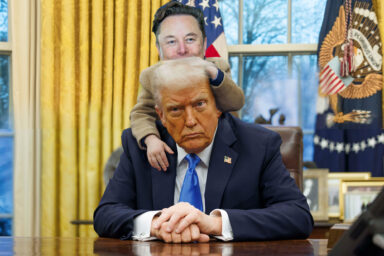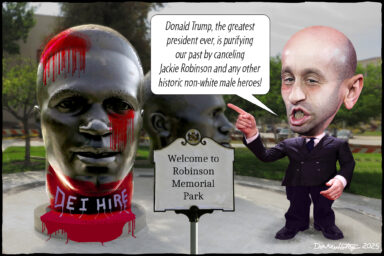The Washington Post, in conjunction with ProPublica, published a long investigative piece today on Timothy Geithner’s tenure as head of the New York Federal Reserve. The article particularly focuses on his oversight of Citigroup, the largest bank under the New York Fed’s authority and the recent recipient of $45 billion in TARP money.
Under the headline “As Crisis Loomed, Geithner Pressed But Fell Short,” the story leads with Geithner’s success in getting banks involved in the derivatives market to computerize their transactions to “cut backlogs and make the market easier to monitor.” The move won him praise in the financial industry.
Two nut graphs summarize the gist of the story:
Yet as Geithner and the New York Fed worked to solve narrow mechanical issues in the derivatives market, they missed clear signs of a catastrophe in the making. When the housing market collapsed, derivatives stoked the fires that ignited inside some of the biggest banking companies. The firms’ failure to assess an array of risks they were taking has emerged as a key element in the multi-trillion dollar meltdown of the global financial system.
Although Geithner repeatedly raised concerns about the failure of banks to understand their risks, including those taken through derivatives, he and the Federal Reserve system did not act with enough force to blunt the troubles that ensued. That was largely because he and other regulators relied too much on assurances from senior banking executives that their firms were safe and sound, according to interviews and a review of documents by The Washington Post and the nonprofit journalism organization ProPublica.
The upshot, then, is that Geithner made honest attempts to oversee the derivatives market, but “fell short,” “missed signs,” and “did not act with enough force.”
But consider the following three paragraphs buried in the story, that follow detailed reporting on how Geithner met regularly with Citibank’s top officials—more often, in fact, than any other bank’s executives:
In 2005, as regulators abroad investigated Citigroup for imprudent trading practices, the Fed banned it from making new acquisitions. The ban was lifted in April 2006 after Citigroup assured the New York Fed it had tightened its compliance. At the end of that year, without public explanation, the Fed also terminated a three-year-old public-enforcement agreement that required Citigroup to beef up its risk management and file regular reports with the Fed.
At the time, Citigroup was taking on more risk. It was reporting record profits while also doubling its exposure to the subprime market. In 2006 Citigroup originated nearly twice as many subprime mortgages as the year before. It also issued twice as many exotic securities known as collateralized debt obligations — including many composed of subprime loans.
By fall 2007, Citigroup began to recognize huge losses from these and other bets. At the urging of Geithner and the Fed, Citigroup began raising more capital to fill the growing holes in its balance sheets and reassure the markets of its solvency.
Just as the New York Fed didn’t explain its actions to the public in 2006, the article fails to assess their significance for its readers.Presumably the reporters tried but failed to get information about the Fed’s decisions.
But does this vacuum of detail about the New York Fed’s conduct justify labeling Geither’s oversight simply one that “fell short” in monitoring and regulating Citi? On the contrary, Geithner’s Fed lifted a ban on Citi making new acquisitions and freed the bank from requirements to strengthen its risk management and report to the Fed at the very time that Citi needed stronger, not weaker, oversight. The result: Citi doubled its bets in the subprime and derivatives markets, and eventually needed a $45 billion bailout from taxpayers.
Make no mistake: the buried lede here is that Geithner’s Fed aided and abetted Citigroup in the very financial practices that have led to the current crisis.
Postscript: As Bill Moyers noted in a must-watch interview with Bill Black, Geithner said in Capitol Hill hearings on March 26, “I’ve never been a regulator.”
If he wasn’t a regulator while serving as president of the New York Federal Reserve, what was he?
Whatever the answer, if Geither didn’t consider himself a regulator, then he would simply deny that he “fell short,” “missed signs” and “did not act with enough force,” as the Washington Post/ProPublica alleges. From Geithner’s lights, the journalists simply misunderstood his role.
(hat tip to Glenn Greenwald.)


